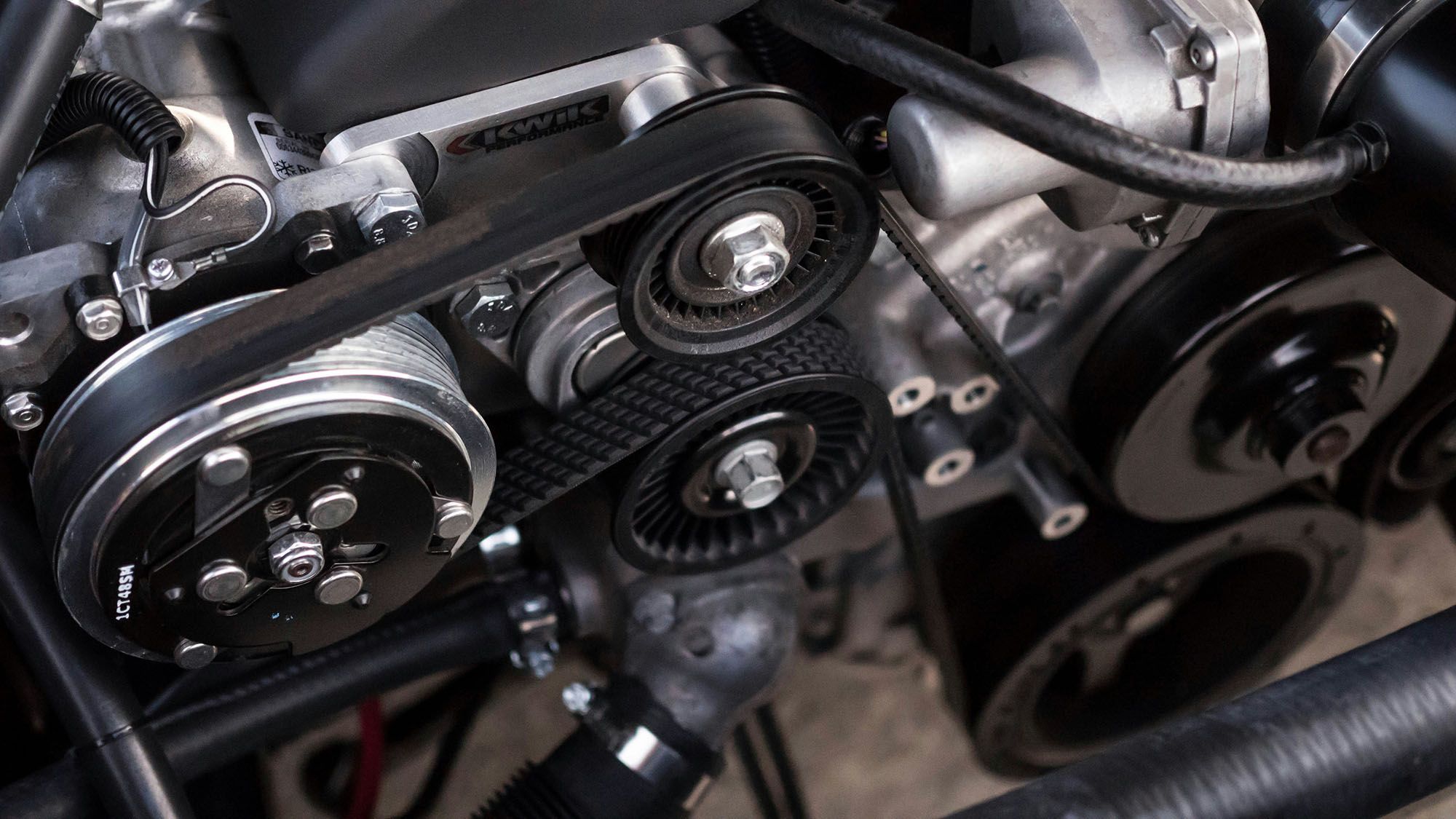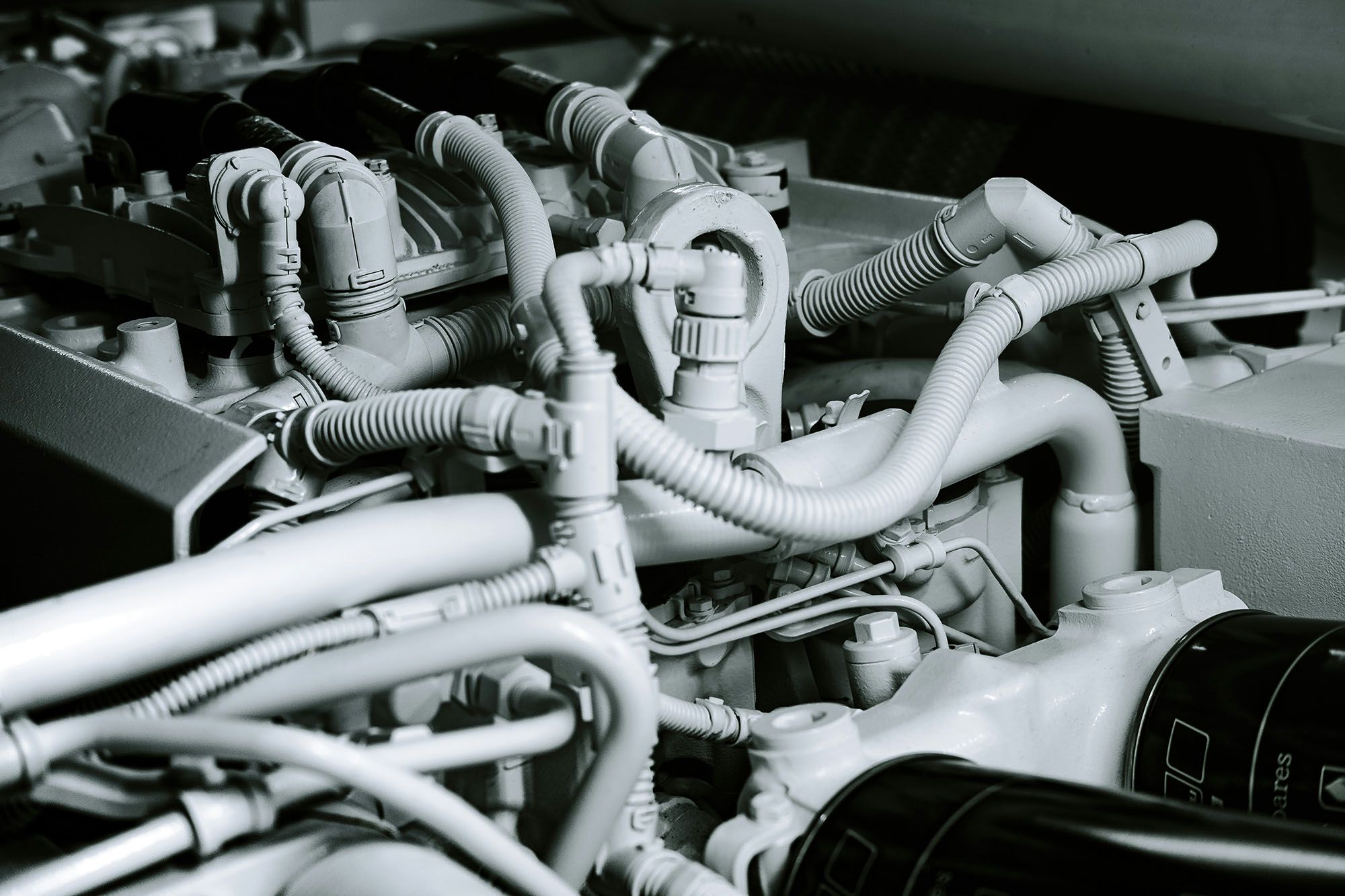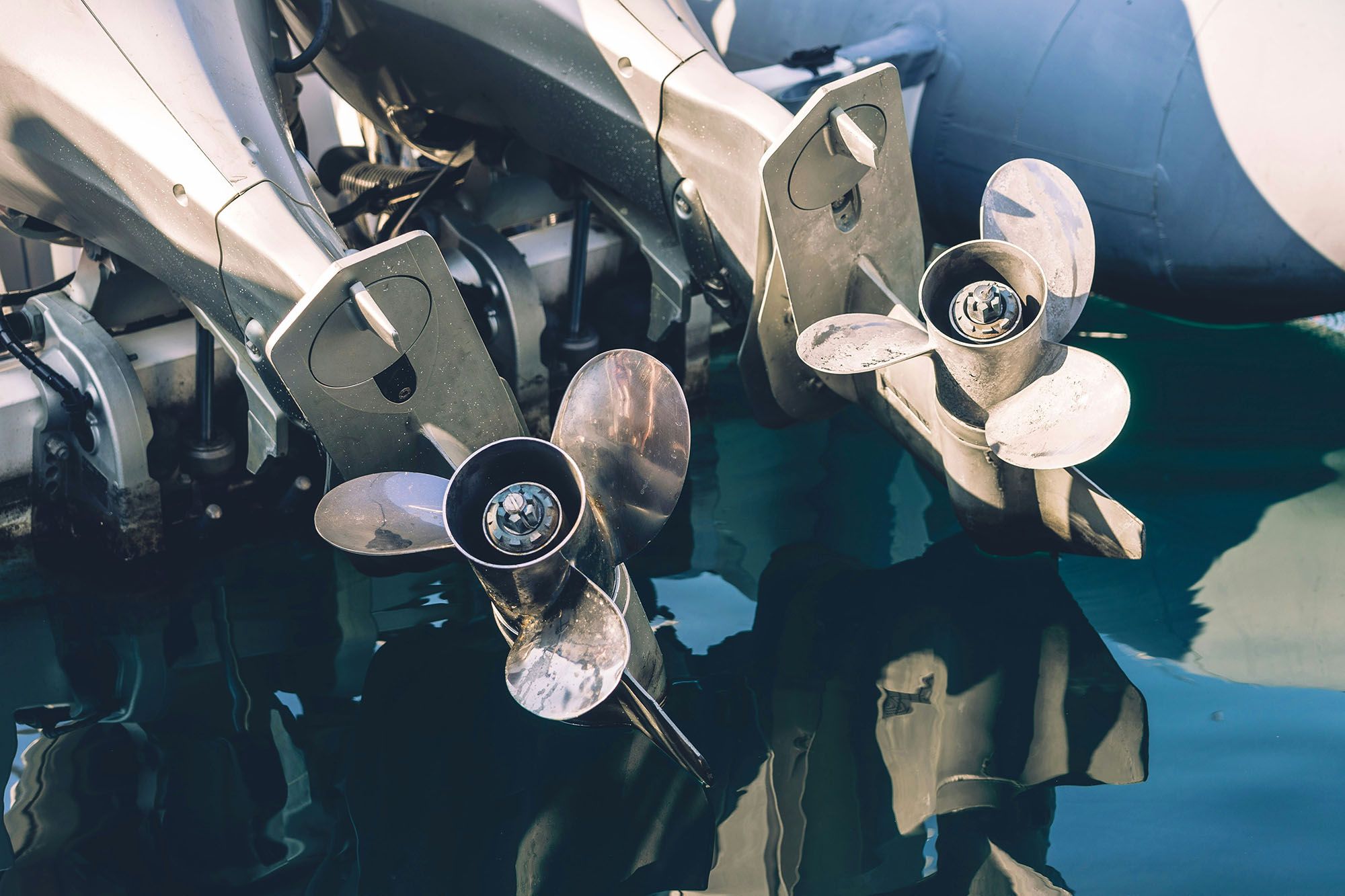The outboard motor is one of essential pieces of equipment on a boat
RMK Merrill Stevens The outboard motor is one of the most essential pieces of equipment on a boat. It provides the power needed to get you from point A to point B - and must be reliable enough to withstand long days on the water.
However, like a car, an outboard motor can run into problems that require some basic repairs. Fortunately, many of these issues are easy to fix at home.
Change the Oil

The oil in your outboard motor does more than keep it running; it also lubricates all the moving internals and helps prevent the wear and tear that can lead to failure. Getting an oil change done regularly is the best way to ensure that your engine runs well and stays in good condition for years to come.
How often you need to change your outboard's oil depends on several factors, including how you use the boat, how much the engine is used and the type of oil that you buy. However, the bare minimum is every year or so.
While you can get an oil change done by a professional mechanic, it's not a bad idea to take the DIY route once in a while as long as you have the tools and supplies on hand that you need. This includes an engine drain pan, wrench or flathead screwdriver and shop towels or rags.
To begin, place the pan beneath the outboard and tilt it so that the drain screw is facing downward. This will make the oil flow out faster and easier.
You should run the outboard for a few minutes to warm up the old oil, which makes it less viscous and allows it to drain more easily. Once the oil is at operating temperature, remove the drain plug and replace it with a new one.
Some engines have a drain screw that's easy to access while others have a bolt that requires a little more effort. Whatever the case, drain the oil and then change the oil filter.
Before starting the job, check the level of the oil on the dipstick and look for any signs that it needs to be changed. If it's dark and discolored or you notice large chunks of metal, this could indicate a serious problem that will need to be taken care of by a professional.
Changing the oil is a simple and inexpensive maintenance procedure that you can do yourself, so it's worth the effort. It will save you money and time in the long run by preventing damage to the motor that would otherwise occur from not getting it done on a regular basis.
Inspect the Spark Plugs
If your outboard motor has trouble running, it may be a sign of a problem with the spark plugs. These components are essential for firing the cylinders to generate enough power to start your engine. However, they are also susceptible to damage.
A quick and easy way to diagnose problems with your outboard’s spark plugs is to check for a lack of electrical current when the engine is turned over. To do this, disconnect the wires on one of the spark plug leads. Next, place a spark plug tester across the top of the plug (or a piece of unpainted metal that can act as a ground).
Turn over the engine and see if you can see a spark jump across the gap. If it’s not visible, the spark plug isn’t getting enough electrical current or is dim.
This can be a clue to a number of different problems, including a bad coil or a faulty capacitor discharge ignition unit. You can also use a peak reading voltmeter to check the output from the spark plugs and determine whether they are producing a strong spark.
You should also check the spark plug holes that are threaded into your outboard’s cylinder head for corrosion. These can corrode easily in salt water environments.
Once you have inspected the spark plugs, it is time to replace them. This is a relatively cheap maintenance task and it can help keep your engine operating at its best.
When you’re ready to replace the spark plugs, be sure to purchase the right size and type of plug for your outboard. It’s also important to “gap” the center and ground electrodes of the plug, which is outlined in the manual.
It’s best to do this at the same time that you’re replacing the plugs, as it makes it easier to determine if they’re properly matched. It’s not a good idea to crank the motor for too long without a gap between the center and ground electrodes; it can cause the spark to travel through the plug wire insulation and to a nearby ground, resulting in higher than intended voltages.
Check the Fuel System

The fuel system in an outboard motor is responsible for providing the fuel that your engine needs to run. It includes a tank, pump, filter and injectors or carburetor. Each component needs to perform flawlessly in order to achieve expected vehicle performance and reliability.
It's also important to check the fuel system for signs of wear and tear. Inspect the fuel line, fuel pump and injectors for cracks and leaks that could cause a problem. If there are any issues, they should be repaired before they become worse.
When the fuel pump is working correctly, it's able to draw the right amount of fuel from your tank and send it through the correct lines to the proper injectors or carburetor. The fuel then goes to the cylinder chamber where it's mixed with air and burned to produce energy.
If the fuel system in your outboard is not functioning properly, it's going to be hard for it to start. It might have a hard time getting to the spark plug, or it might not have enough air to ignite the fuel and fire up your engine.
A good way to test the fuel system is by examining the primer bulb. This bulb is attached to the fuel line and connects the fuel system from your fuel tank to your outboard's engine. If the primer bulb is working, it should become firm when you pressurize it prior to starting your engine.
Next, you'll need to check the fuel filter in your outboard's tank. This filter is a crucial part of the fuel system because it helps prevent debris and dirt from entering the engine. If the filter is clogged, it won't allow enough fuel to pass through.
You can easily do this by removing the filter and taking a closer look. If you notice any cracks or signs of rust, it's probably time for a replacement.
If you want to keep your fuel system running smoothly, you should add a fuel stabilizer. This keeps the fuel from deteriorating, removes carbon deposits and protects the entire system as it sits in storage. Adding this additive to your fuel every few months is the best way to ensure your outboard runs like new all season long.
Inspect the Propeller

The propeller is one of the most important parts of your outboard motor. It determines how fast your boat goes, how much fuel it uses, and how well the engine operates. It also affects the safety of the boat and the passengers onboard. Propellers can get damaged easily, so it is vital to make sure they are in good working order before you head out on the water.
If you notice the blades of your propeller spinning in a way that is unnatural to them, they may be broken or have a bent axis. A broken prop can lead to a loss of power and speed, so it is best to replace the blades immediately before you experience any major issues.
Another common problem is a cracked or chipped propeller hub. This can cause the propeller to spin out of contact with the shaft. This is a serious condition that needs to be repaired by a professional.
Some boats have a built-in system to detect this, but the easiest way to check for this is to remove the prop and inspect the steering pivot and mounting bolt. This will help you detect any loose screws that can allow the prop to spin out of place.
You can also try rapping a blade to see if it makes a sound. While you are at it, make sure the shaft is free of any debris and that the nut is tight.
A simple eyeball test will tell you whether or not the blades on your prop are rubbing together and can be done with a metal ruler that is clamped to the rudder. Then, rotate the prop by hand, observing variations in the clearance between each blade tip as it passes the straight edge.
Using this simple method, you will be able to determine if the blades on your prop are worn out or have a misalignment that is causing the blades to rub together. It is a simple procedure, but it can be very helpful when you need to get the propeller repaired.
You can also use a software program to help you determine the proper pitch for your boat. You can find these programs online, or you can ask your local marine dealer for recommendations.
Similar Blogs

Copyright © 2024 RMK MERRILL STEVENS, All rights reserved.






